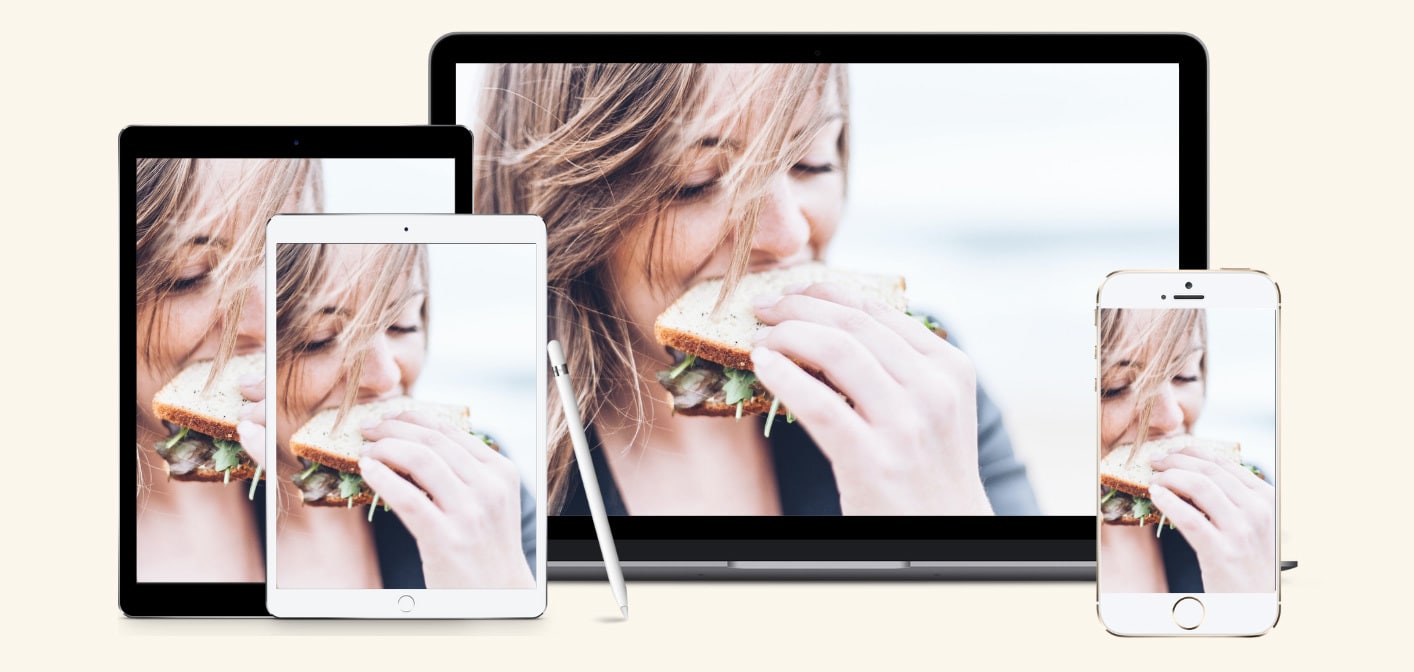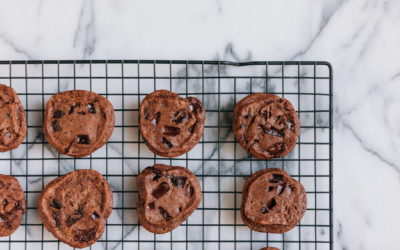The internet and social media are some of the most powerful tools at our disposal when it comes to answering nutrition questions. However, one thing we often find challenging is how to separate who is posting reliable nutrition information and who is not.

Instagram is a rapidly growing social platform. To give you some frightening statistics, 35% of the UK population are spending an average of 5 minutes per day using it (1). With a booming and unregulated ‘wellness industry’.
Instagram appears to be a particularly thriving breeding place for unqualified (and sometimes qualified) individuals who are irresponsibly communicating poor quality health information. Whilst Registered Dietitians and qualified healthcare professionals are governed by law to uphold standards, the wellness industry is actually unregulated. This means anyone can post about nutrition information.
Social media also given rise to a social media-based healthy eating community (2), who have been identified to have a higher prevalence of Orthorexia Nervosa (ON) (3) (an obsession with eating foods that one considers healthy). Higher Instagram use has identified to be linked to increased ON symptoms.
For individuals using social media platforms, there is limited guidance on how to sift through and eliminate poor quality and irresponsible nutrition information. In this article, I am going to outline, with examples, how you as a consumer can ensure you are engaging in both responsible and reliable nutrition information on social media.
“the wellness industry is actually unregulated. This means anyone can post about nutrition information.”

But how can qualified professionals be posting irresponsibly?
During undergraduate training of healthcare professionals, there is little formal training in how to communicate effectively and responsibly to wider audiences on social platforms such as Instagram. This is of no disrespect to the training. It’s because Instagram is a fairly new and rapidly growing platform that was only established in 2010.
There has been some guidance published for professional (4, 5), however, Instagram has moved forward since then, and whilst these guidelines for professional are useful, they are not rigorous. This means that not only are non-qualified individuals posting irresponsibly, qualified professionals don’t always get it right either.
I have therefore, created this article to help direct you when reading nutrition information on social media.

Responsible communication refers to communication that is appropriate, honest, trustworthy and respects confidentiality (5). Below are examples and checkpoints that outline what to look out for when engaging in nutrition content on social media.
1. Is the content backed up by good quality science?
Content sometimes states “research says” or reports on a single study to make claims. Every claim, argument or opinion should be supported and justified by credible evidence from research or other authoritative sources. This doesn’t mean formal reference techniques need to be used at all times (especially in places like Instagram), however, the content should state what we know, what we don’t know, and how this could be looked at in the wider context of health and nutrition.
A subtle example: “true Iron deficiency will usually show over time”. (This statement needs expanding and evidence to support the claims. How long? How do you know?)
Ask yourself:
- Is it clear what sources of information were used to write that content?
- Have they given a balanced view? E.g. have they highlighted areas of uncertainty.
- Have they provided details of where to access additional information? e.g. links in the Instagram bio, text below the image or references beneath?
2. Does the content sound like they are diagnosing your problem?
Responsible and reliable nutrition information should enable you to choose what is in your best interest. Information that has the direct objective of providing you with advice, needs to be honest, informative, clear and realistic, and not use language which exaggerates or makes assumptions (examples below).

Subtle examples:
- “the most common symptoms of Iron deficiency include; fatigue, weakness, pale skin”. (These symptoms could be a result of so many other things too. It is therefore, unbalanced as it has not been highlighted that these symptoms could be from a whole host of other conditions. It could also be perceived as diagnosing your problem, when there could be a whole host of other things going on. It is, therefore incomplete and could be misleading. It has also not been referenced and does not direct you on where to find further information.)
- “If you are eating X on most days, you will be doing wonders for your health”. (This statement is misleading and unbalanced. Some people with certain conditions may not be able to eat that certain food, so this statement is too personal).
Ask yourself:
- Is the information shared a personal opinion, being presented as fact? (how do they know? what evidence do they have to support this?). This should be clear.
- Is the language they are using to communicate facts or recommendations balanced? Do they deliberately chose words that exaggerate or bring out emotion? (e.g. “doing wonders”)
3. Is it within their professional remit?
When sharing nutrition and information and dishing out claims, it is crucial that the author only provides statements that sit within their professional remit and not beyond the boundaries of their qualifications/expertise.

How to know if they are qualified?
You can look at their years of experience, and qualifications in the field. Is the nutritionist a member of a professional body like the British Association for Nutrition & Lifestyle Medicine (BANT) or the Association for Nutrition (AfN)? Is the Dietitian registered with the Health and Care Professions Council (HCPC), and a member of the British Dietetic Association (BDA)? Do they have any industry awards or have they contributed to scientific research? They should not be reluctant to share this information with you. This information is also accessible online.
A subtle example: Dietitian or nutritionist sharing their workout routine on Instagram, or in their stories, for others to replicate.
Ask yourself:
- Have they made it clear that they are not qualified and therefore not providing guidance?
- Are they open to sharing their qualifications and experience with you? They should not be hesitant about sharing this information.
4. Do they link their body or looks up with messages about health?
Platforms like Instagram are image-focused, which play to the ‘picture-superiority effect’, whereby images are more likely to be remembered than words (6). It’s also a platform where you can select what images you are exposed to. The limited exposure of such images can lead us to believe that one behaviour is more present or normal than is actually the case. This may lead to perceived social pressures to act similarly to such behaviours. Therefore, individuals posting images of only healthy looking food, unbalanced meals, and tying up photo’s of ‘healthy food’ to the ‘thin ideal’ body (e.g. holding a green smoothie posing in a bikini with a think cultural ‘ideal’ body), can be misleading and lead us to believe that we need to behave that way to become something like the image.

Ask yourself:
- How does the post make you feel? If it doesn’t make you feel good about yourself, unfollow.
- Are there different types of foods in their feed that are reflective of a balanced diet?
- Do they regularly cut out large food groups?
- Do they promote balance but don’t eat carbs?
- Do they push unrealistic body standards?
- Do they talk about ‘real food’ or ‘clean eating’?
Summary
Whilst reliable information can sometimes be hard to comeby, it is out there I promise. You just have to have your witts about you, and surround yourself with the right people on social media. This guidance was aimed to give you a more in depth perspective on how to detect bulls**t and sift out reliable nutrition information, finishing up with some suggestions on who to follow on social media. You can follow me on instagram @nudenutritionrd or check out some of my latest blogs below for some more nonsense stripping!
Comments, feedback and suggestions welcome!

Additional suggestions/recommendations
- If you are not sure or confused by the content you see, then ask. If they cannot come back to you with more information or the evidence, then unfollow! You can’t control the media, but you do have a say in what you consume.
- If you are really not sure about a claim you see, there is an amazing charity called Sense About Science who have set up a campaign called ‘Ask for Evidence’. Ask them for the evidence.
- Have you read a headline you are not sure about? The British Nutrition Foundation responds to consultations of major public health importance on a range of food and nutrition-related topics.
- NHS choices simplify health topics with a balanced approach, breaking down the research studies with links to more information.
- Nude Nutrition – send in your requests and have your questions answered and nutrition nonsense stripped, in particular on Instagram @nudenutritionrd
- I have recently been recognised by The WellSpoken Mark to be making a positive impact on the ‘wellness’ industry. They are an independent authority committed to leading high standards in the currently unregulated wellness industry. Anyone else you see holding this mark can be deemed as reliable and trustworthy.
- The Rooted Project – funded by two Registered Dietitians, this is an event series set up where they choose speakers who are leaders in their field to translate the science into interesting and practical content.
- British Dietetics Association – Tons of food fact sheets written by Registered Dietitians to help you learn the best ways to eat well and stay healthy.
References:
- Ofcom (2018). Communications Market Report. Ofcom. https://www.ofcom.org.uk/__data/assets/pdf_file/0022/117256/CMR-2018-narrative-report.pdf
- Freeman H (2015) Green is the new black: the unstoppable rise of the healthy-eating guru. Guardian
- G. Turner & C. E. Lefevre (2017). Instagram use is linked to increased symptoms of orthorexia nervosa. Eating and Weight Disorders. 22:277-284.
- Murphy et al. (2014). Engaging responsibly with social media: the BJUI guidelines. BJU International. 114: 9–15.
- HCPC (2018). Guidance on Social Media. Health and Care Professions Council.
- Childers TL, Houston MJ (1984) Conditions for a picture-superiority effect on consumer memory. Journal of Consumer Research. 11(2):643–654.




